
Catherine Greenaway was an English Victorian artist and writer, known for her children's book illustrations. She received her education in graphic design and art between 1858 and 1871 from the Finsbury School of Art, the South Kensington School of Art, the Heatherley School of Art, and the Slade School of Fine Art. She began her career designing for the burgeoning holiday card market, producing Christmas and Valentine's cards. In 1879 wood-block engraver and printer, Edmund Evans, printed Under the Window, an instant best-seller, which established her reputation. Her collaboration with Evans continued throughout the 1880s and 1890s.
Gwendolen Mary "Gwen" Raverat, was an English wood engraver who was a founder member of the Society of Wood Engravers. Her memoir Period Piece was published in 1952.

Wood engraving is a printmaking technique, in which an artist works an image into a block of wood. Functionally a variety of woodcut, it uses relief printing, where the artist applies ink to the face of the block and prints using relatively low pressure. By contrast, ordinary engraving, like etching, uses a metal plate for the matrix, and is printed by the intaglio method, where the ink fills the valleys, the removed areas. As a result, the blocks for wood engravings deteriorate less quickly than the copper plates of engravings, and have a distinctive white-on-black character.
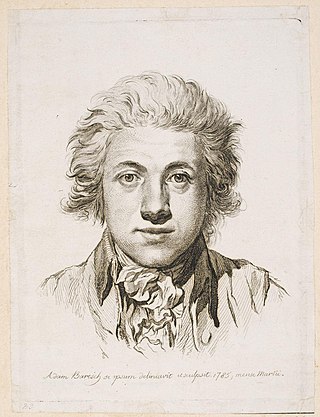
Johann Adam Bernhard Ritter von Bartsch was an Austrian scholar and artist. His catalogue of old master prints, Le Peintre Graveur is the foundation of print history, and he was himself a printmaker practicing engraving and etching.
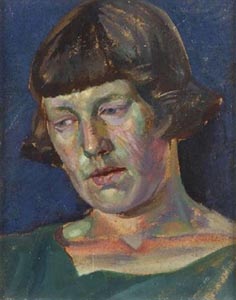
Agnes Miller Parker (1895–1980) was an engraver, illustrator and painter in oil and tempera. Born in Ayrshire, she spent most of her career in London and southern Britain. She is especially known as a twentieth century wood-engraver thanks to her collaboration with H. E. Bates, which resulted in two outstanding wood engraved books: Through the Woods (1936) and Down the River (1937), published by Victor Gollancz.
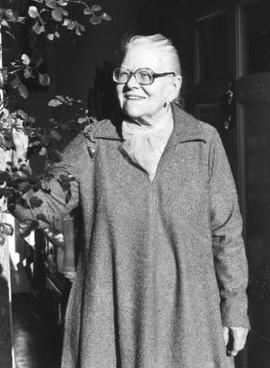
Joan Hassall was a wood engraver and book illustrator. Her subject matter ranged from natural history through poetry to illustrations for English literary classics. In 1972 she was elected the first woman Master of the Art Workers' Guild and in 1987 was awarded the OBE.
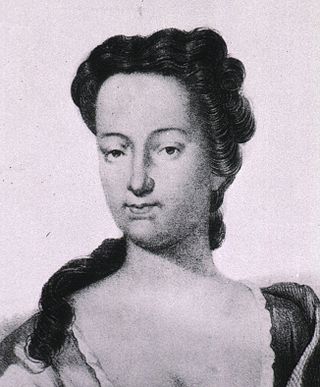
Elizabeth Blackwell was a botanical illustrator and author who was best known as both the artist and engraver for the plates of "A Curious Herbal", published between 1737 and 1739. The book illustrated medicinal plants, and was designed as a reference work for the use of physicians and apothecaries.
Garrick Salisbury Palmer was an English painter, wood engraver, photographer and teacher.

Edmund Evans was an English wood-engraver and colour printer during the Victorian era. He specialized in full-colour printing, a technique which, in part because of his work, became popular in the mid-19th century. He employed and collaborated with illustrators such as Walter Crane, Randolph Caldecott, Kate Greenaway and Richard Doyle to produce what are now considered to be classic children's books. Little is known about his life, although he wrote a short autobiography before his death in 1905 in which he described his life as a printer in Victorian London.
Rosemary Feit Covey is an American printmaker, whose work focuses on wood engraving.
Rosemary Kilbourn is a Canadian printmaker, illustrator and stained glass artist known for her work in the wood engraving.
Margaret Pilkington was a British wood-engraver who was active at the beginning of the twentieth century. She was a pupil of Noel Rooke at the Central School of Art and Design and was a member of the Society of Wood Engravers and the Red Rose Guild. She was awarded the OBE in 1956.
Anne Desmet is a British artist who specializes in wood engravings, linocuts and mixed media collages. She has had three major museum retrospectives, received over 30 international awards, and her work is in museum collections and publications worldwide.
Hilary Jasmine Erica Paynter is a British wood engraver and printmaker.
Gwenda Morgan was a British wood engraver. She lived in the town of Petworth in West Sussex.
James Thomas Armour Osborne RE (1907-1979) was a British painter, original printmaker, etcher and engraver known for his ornithological and wildlife prints. He was a student at the Royal College of Art, a Rome Scholar, a Fellow of the Royal Society of Painter-Etchers and a founder of the Society of Wildlife Artists.
Barbara Greg was a British artist who illustrated a number of books.
Miriam Macgregor is a British author, illustrator, wood engraver, and fine press compositor. Born in Shillong, Assam, Macgregor was educated at the Guildford School of Art. She began her professional career in the art department of the publisher B. T. Batsford, before becoming a freelance artist. In 1977, she began to work for the fine press publisher, Whittington Press. At the time, all type was set by hand. She still works at the Whittington Press as a compositor and illustrator. She has created images for other fine press publishers, including the Folio Society and Primrose Hill Press. Macgregor is a self-taught wood engraver and member of the Society of Wood Engravers and Royal Society of Painter-Printmakers. She has furnished wood engravings for the horticultural journal, Hortus, in addition to countless wood engravings and pochoir illustrations for books and posters published by the Whittington Press. In addition to the texts she has illustrated, her subjects primarily concern English rural life, farming, architecture, botany, and felines. Macgregor has published several collections of her own images, and curated a collection of contemporary wood engravings of cats, published by Primrose Hill Press in 1999 as Cat cuts.
Mary Elizabeth Groom was a British artist, notable for her work as a printmaker and for the books she illustrated in the 1930s for the Golden Cockerel Press.
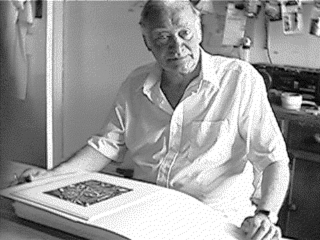
James Bostock was a British painter. His work was part of the painting event in the art competition at the 1948 Summer Olympics.









